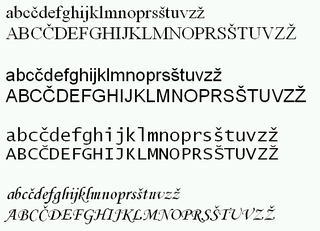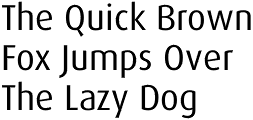
A diacritic is a glyph added to a letter or to a basic glyph. The term derives from the Ancient Greek διακριτικός, from διακρίνω. The word diacritic is a noun, though it is sometimes used in an attributive sense, whereas diacritical is only an adjective. Some diacritics, such as the acute ⟨ó⟩, grave ⟨ò⟩, and circumflex ⟨ô⟩, are often called accents. Diacritics may appear above or below a letter or in some other position such as within the letter or between two letters.
A lipogram is a kind of constrained writing or word game consisting of writing paragraphs or longer works in which a particular letter or group of letters is avoided. Extended Ancient Greek texts avoiding the letter sigma are the earliest examples of lipograms.
The acute accent, ◌́, is a diacritic used in many modern written languages with alphabets based on the Latin, Cyrillic, and Greek scripts. For the most commonly encountered uses of the accent in the Latin and Greek alphabets, precomposed characters are available.
The Danish and Norwegian alphabet is the set of symbols, forming a variant of the Latin alphabet, used for writing the Danish and Norwegian languages. It has consisted of the following 29 letters since 1917 (Norwegian) and 1948 (Danish):
The Swedish alphabet is a basic element of the Latin writing system used for the Swedish language. The 29 letters of this alphabet are the modern 26-letter basic Latin alphabet plus ⟨å⟩, ⟨ä⟩, and ⟨ö⟩, in that order. It contains 20 consonants and 9 vowels. The Latin alphabet was brought to Sweden along with the Christianization of the population, although runes continued in use throughout the first centuries of Christianity, even for ecclesiastic purposes, despite their traditional relation to the Old Norse religion. The runes underwent partial "latinization" in the Middle Ages, when the Latin alphabet was completely accepted as the Swedish script system, but runes still occurred, especially in the countryside, until the 18th century, and were used decoratively until mid 19th century.
Finnish orthography is based on the Latin script, and uses an alphabet derived from the Swedish alphabet, officially comprising twenty-nine letters but also including two additional letters found in some loanwords. The Finnish orthography strives to represent all morphemes phonologically and, roughly speaking, the sound value of each letter tends to correspond with its value in the International Phonetic Alphabet (IPA) – although some discrepancies do exist.

The Slovene alphabet is an extension of the Latin script used to write Slovene. The standard language uses a Latin alphabet which is a slight modification of the Croatian Gaj's Latin alphabet, consisting of 25 lower- and upper-case letters:

Modern English is written with a Latin-script alphabet consisting of 26 letters, with each having both uppercase and lowercase forms. The word alphabet is a compound of alpha and beta, the names of the first two letters in the Greek alphabet. Old English was first written down using the Latin alphabet during the 7th century. During the centuries that followed, various letters entered or fell out of use. By the 16th century, the present set of 26 letters had largely stabilised:

The Polish alphabet is the script of the Polish language, the basis for the Polish system of orthography. It is based on the Latin alphabet but includes certain letters (9) with diacritics: the acute accent – kreska: ⟨ć, ń, ó, ś, ź⟩; the overdot – kropka: ⟨ż⟩; the tail or ogonek – ⟨ą, ę⟩; and the stroke – ⟨ł⟩. ⟨q⟩, ⟨v⟩, and ⟨x⟩, which are used only in foreign words, are usually absent from the Polish alphabet. Additionally, before the standardization of Polish spelling, ⟨qu⟩ was sometimes used in place of ⟨kw⟩, and ⟨x⟩ in place of ⟨ks⟩.

Alphabetical order is a system whereby character strings are placed in order based on the position of the characters in the conventional ordering of an alphabet. It is one of the methods of collation. In mathematics, a lexicographical order is the generalization of the alphabetical order to other data types, such as sequences of numbers or other ordered mathematical objects.
An autogram is a sentence that describes itself in the sense of providing an inventory of its own characters. They were invented by Lee Sallows, who also coined the word autogram. An essential feature is the use of full cardinal number names such as "one", "two", etc., in recording character counts. Autograms are also called 'self-enumerating' or 'self-documenting' sentences. Often, letter counts only are recorded while punctuation signs are ignored, as in this example:
This sentence employs two a's, two c's, two d's, twenty-eight e's, five f's, three g's, eight h's, eleven i's, three l's, two m's, thirteen n's, nine o's, two p's, five r's, twenty-five s's, twenty-three t's, six v's, ten w's, two x's, five y's, and one z.
Polish orthography is the system of writing the Polish language. The language is written using the Polish alphabet, which derives from the Latin alphabet, but includes some additional letters with diacritics. The orthography is mostly phonetic, or rather phonemic—the written letters correspond in a consistent manner to the sounds, or rather the phonemes, of spoken Polish. For detailed information about the system of phonemes, see Polish phonology.
Czech orthography is a system of rules for proper formal writing (orthography) in Czech. The earliest form of separate Latin script specifically designed to suit Czech was devised by Czech theologian and church reformist Jan Hus, the namesake of the Hussite movement, in one of his seminal works, De orthographia bohemica.
A heterogram is a word, phrase, or sentence in which no letter of the alphabet occurs more than once. The terms isogram and nonpattern word have also been used to mean the same thing.
Depending on the way one counts, the West Frisian alphabet contains between 25 and 32 characters.

Norwegian orthography is the method of writing the Norwegian language, of which there are two written standards: Bokmål and Nynorsk. While Bokmål has for the most part derived its forms from the written Danish language and Danish-Norwegian speech, Nynorsk gets its word forms from Aasen's reconstructed "base dialect", which is intended to represent the distinctive dialectal forms. Both standards use a 29-letter variant of the Latin alphabet and the same orthographic principles.
The ISO basic Latin alphabet is an international standard for a Latin-script alphabet that consists of two sets of 26 letters, codified in various national and international standards and used widely in international communication. They are the same letters that comprise the current English alphabet. Since medieval times, they are also the same letters of the modern Latin alphabet. The order is also important for sorting words into alphabetical order.

"The quick brown fox jumps over the lazy dog" is an English-language pangram – a sentence that contains all the letters of the alphabet. The phrase is commonly used for touch-typing practice, testing typewriters and computer keyboards, displaying examples of fonts, and other applications involving text where the use of all letters in the alphabet is desired.
Danish orthography is the system and norms used for writing the Danish language, including spelling and punctuation.







